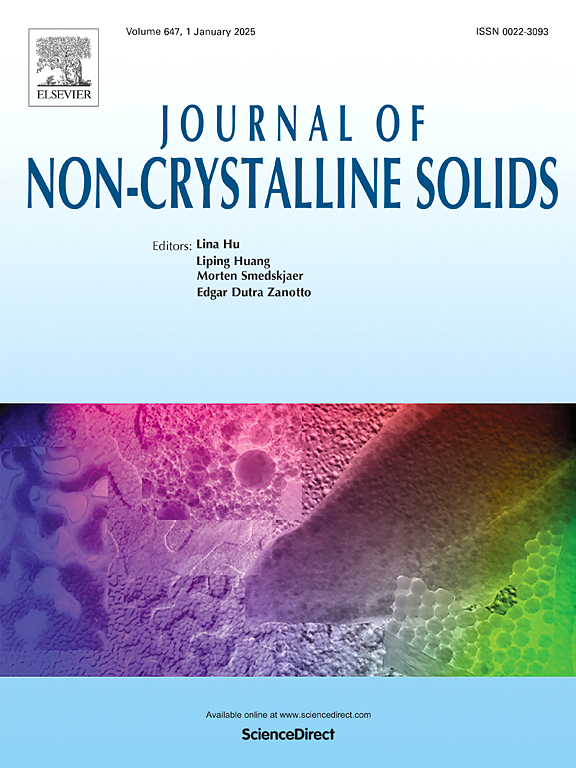Phonon side band spectroscopy of Eu3+ in binary Sb2O3-GeO2 glasses
IF 3.2
3区 材料科学
Q1 MATERIALS SCIENCE, CERAMICS
引用次数: 0
Abstract
Binary glasses in the SbO-GeO system have been prepared with europium doping for spectroscopic investigation of the rare-earth environment. Phonon side band analysis of the photoluminescence excitation spectra reveals an invariant phonon energy of 756 8 cm−1 for binary glasses with between 11–54 mol% SbO. The electron–phonon coupling strength of the high frequency vibronic mode is between 0.005–0.006 for the series. These observations indicate the beneficial impact of SbO on the rare-earth spectroscopy is achieved in the germanate rich side of the composition space (Sb:Ge1), where thermal properties (glass transition and thermal expansion) do not display significant compositional dependence according to previous studies. The combination of favorable spectroscopic properties and slowly varying thermal properties in the binary system with between 18–33 mol% SbO makes these glasses promising for core/clad active optical fiber applications. The phonon energy is lower and the electron–phonon coupling weaker in antimony germanates than in other heavy metal germanates containing lead or bismuth. Using Co as a probe ion, the impurity ion sites appear to be coordinated with bridging oxygen offered by higher coordinated germanate or antimonite polyhedra. Analysis of the Eu emission spectra shows a decrease in crystal field strength and increasing site symmetry as SbO replaces GeO.

求助全文
约1分钟内获得全文
求助全文
来源期刊

Journal of Non-crystalline Solids
工程技术-材料科学:硅酸盐
CiteScore
6.50
自引率
11.40%
发文量
576
审稿时长
35 days
期刊介绍:
The Journal of Non-Crystalline Solids publishes review articles, research papers, and Letters to the Editor on amorphous and glassy materials, including inorganic, organic, polymeric, hybrid and metallic systems. Papers on partially glassy materials, such as glass-ceramics and glass-matrix composites, and papers involving the liquid state are also included in so far as the properties of the liquid are relevant for the formation of the solid.
In all cases the papers must demonstrate both novelty and importance to the field, by way of significant advances in understanding or application of non-crystalline solids; in the case of Letters, a compelling case must also be made for expedited handling.
 求助内容:
求助内容: 应助结果提醒方式:
应助结果提醒方式:


